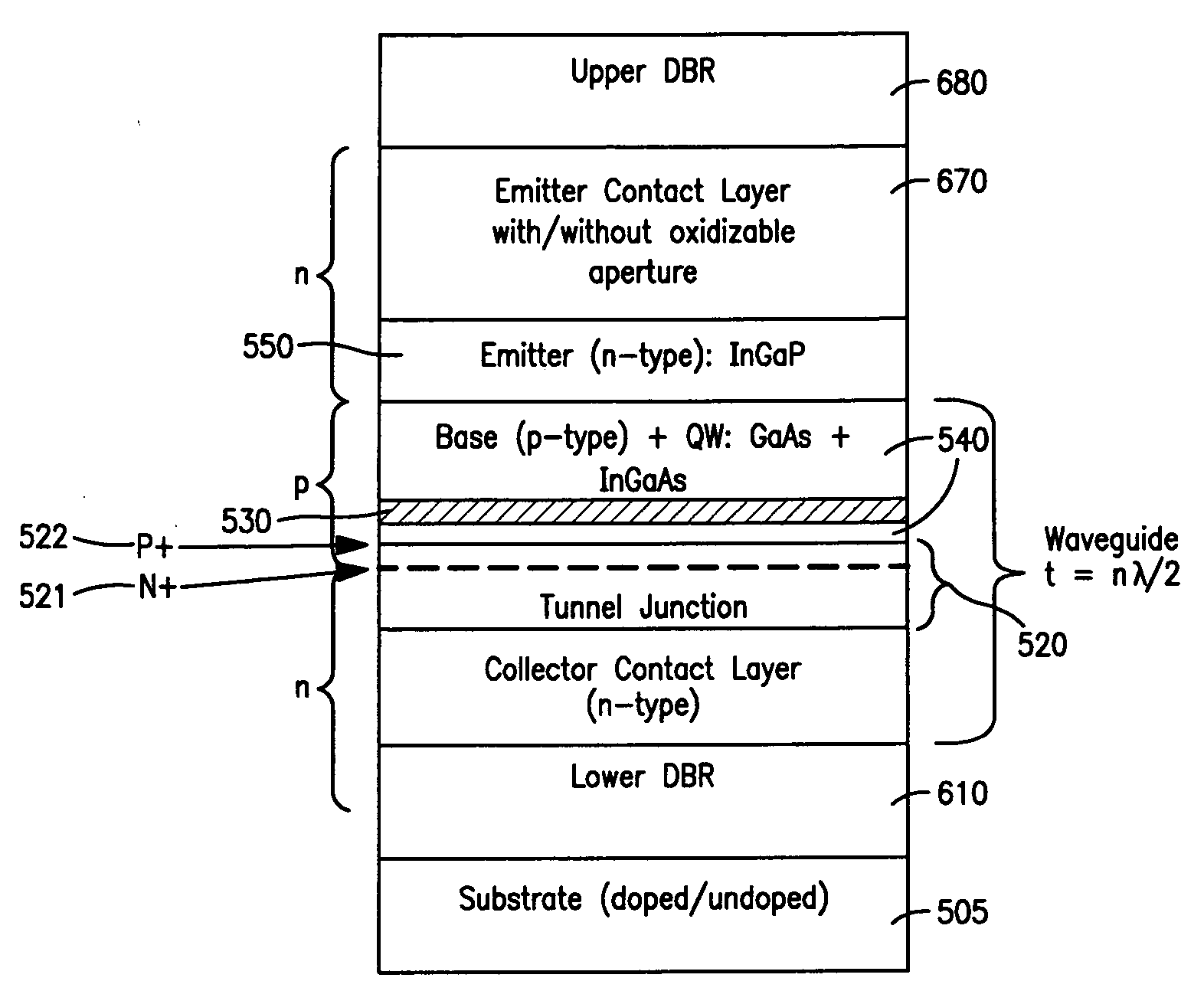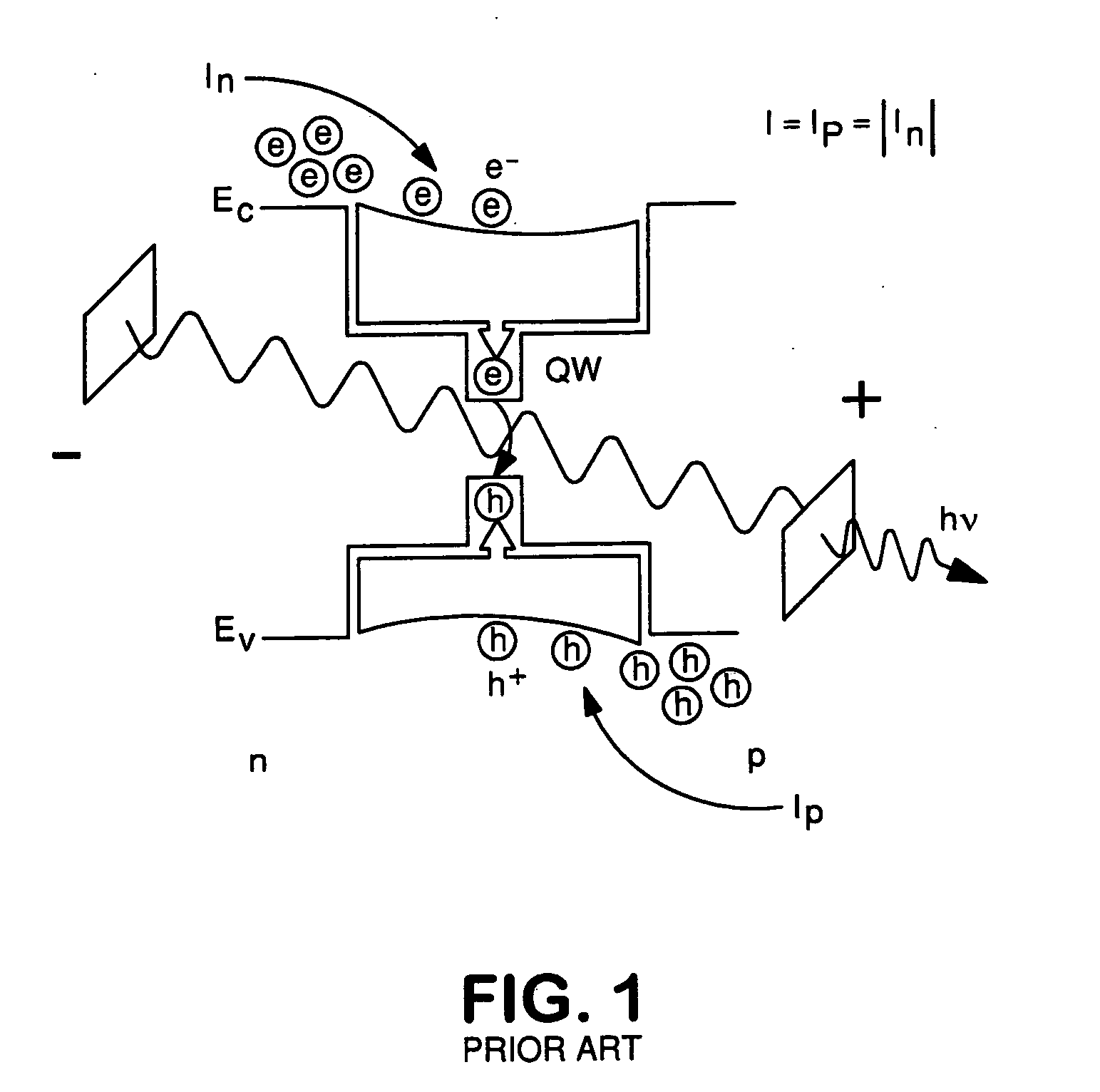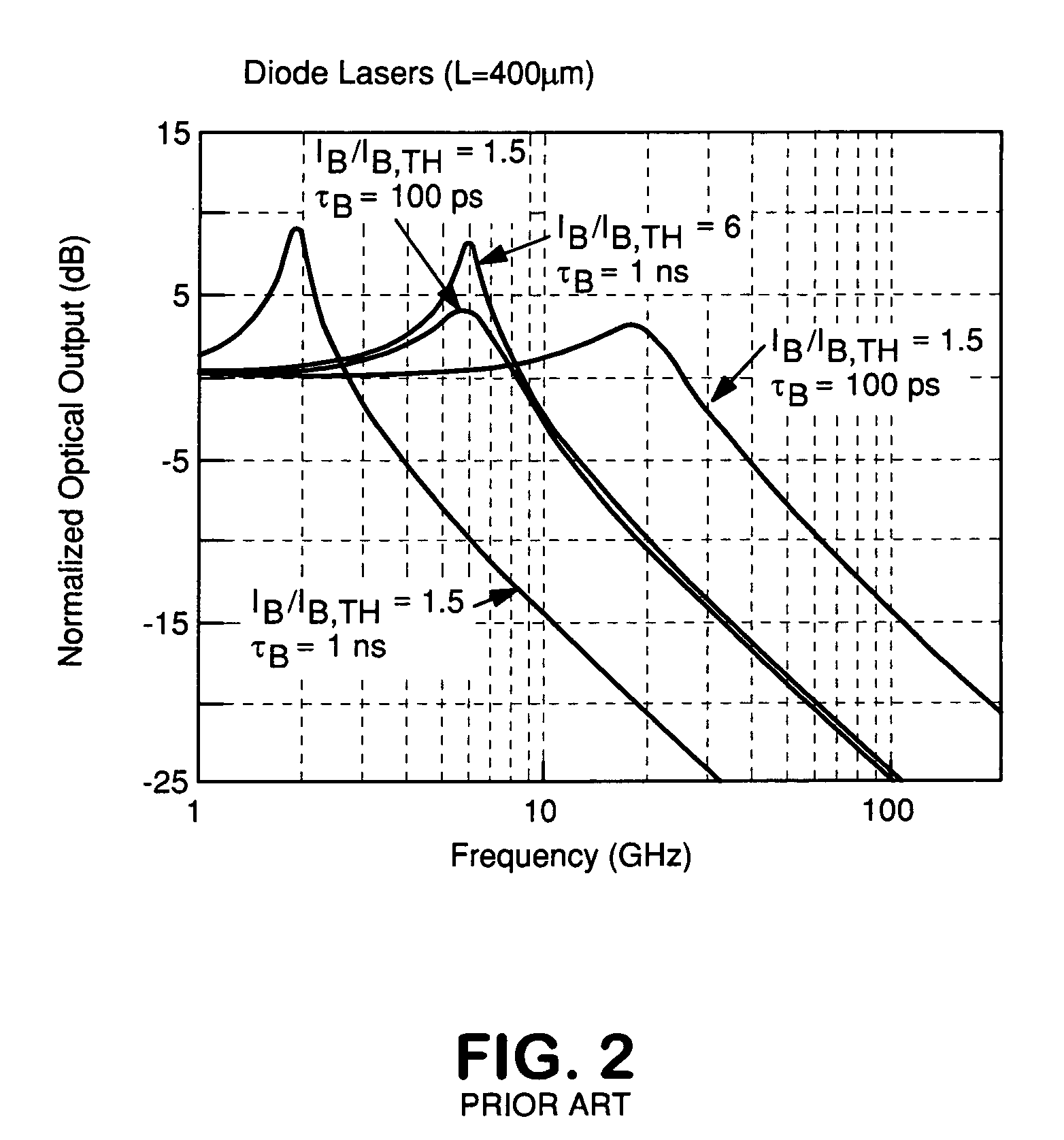Light emitting and lasing semiconductor devices and methods
a technology of semiconductor devices and semiconductor lasers, applied in semiconductor lasers, semiconductor devices, laser details, etc., can solve the problems of resonance peak and speed limitation, avoid injection and transport, sluggish, and high mass
- Summary
- Abstract
- Description
- Claims
- Application Information
AI Technical Summary
Benefits of technology
Problems solved by technology
Method used
Image
Examples
Embodiment Construction
[0028]In approaching the problem of improving the operating speed of existing HBT laser diodes, we start by further analyzing operation of our transistor laser, which is first mentioned in the Background section hereof. A form of the transistor laser is an n-p-n heterojunction bipolar transistor, an n-p-n HBT, with electrons injected at the emitter and transporting efficiently (easily, low mass, high mobility) by diffusion to the collector. The injected electrons are essentially tilted, by diffusion, into a triangular distribution pinned at zero concentration at the base-collector junction. Holes in III-V crystals are high mass and sluggish, and are built-in (acceptor doping), at high concentration, in the p+ base. For a transistor to be a transistor some electrons recombine with holes in the base (IB≠0 and IE=IB+IC, giving gain β=IC / IB), the lost positive charge being resupplied by dielectric relaxation (not injection) by the base contact. It is emphasized that the holes are not in...
PUM
 Login to View More
Login to View More Abstract
Description
Claims
Application Information
 Login to View More
Login to View More - R&D
- Intellectual Property
- Life Sciences
- Materials
- Tech Scout
- Unparalleled Data Quality
- Higher Quality Content
- 60% Fewer Hallucinations
Browse by: Latest US Patents, China's latest patents, Technical Efficacy Thesaurus, Application Domain, Technology Topic, Popular Technical Reports.
© 2025 PatSnap. All rights reserved.Legal|Privacy policy|Modern Slavery Act Transparency Statement|Sitemap|About US| Contact US: help@patsnap.com



